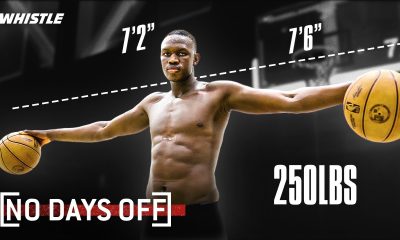Michael Brauner is a Senior Sports Analyst and Contributing Writer for Yellowhammer News. You can follow him on Twitter @MBraunerWNSP and hear him every weekday morning from 6 to 9 a.m. on “The Opening Kickoff” on WNSP-FM 105.5, available free online.
NIL
Justin Herbert Net Worth 2025
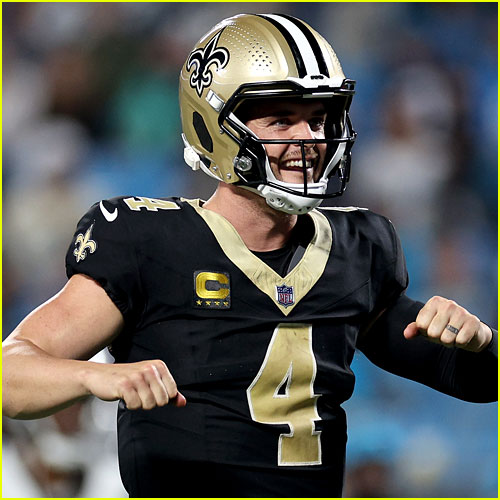


Since joining the Los Angeles Chargers, Justin Herbert has become one of the most recognized names in the NFL. As the team’s star quarterback, his impressive performance on the field has earned him a strong fan base and several career milestones. In 2025, attention has turned not only to his football skills but also to his growing financial success.
Many are interested in how much he earns, the brands he supports, and the business ventures he has taken on. Herbert’s journey reflects a blend of athletic talent and smart financial decisions, showing how a professional athlete can build a strong presence both in sports and in the business world.
Who Is Justin Herbert?

Herbert is an American football player who plays as the quarterback for the Los Angeles Chargers in the NFL. He was born on March 10, 1998, in Eugene, Oregon. He played college football at the University of Oregon, where he had a successful career and led his team to important wins.
Check This Out:
Former Jacksonville Jaguars Star Wide Receiver Justin Blackmon Arrested On Disturbing Charges, Unrecognizable Mugshot Re…
Herbert was drafted by the Chargers in 2020 and quickly became one of the most promising young quarterbacks in the league. He is known for his strong throwing arm, quick thinking, and calm attitude during games. Since joining the NFL, he has earned respect for his talent, leadership, and dedication to improving his performance.
Fans and experts see him as a key player for the Chargers and a rising star in professional football.
Justin Herbert’s Net Worth And Salary

As the reports suggests, Herbert has a net worth of about $25 million, although confirming an exact amount is difficult. A big part of this comes from his massive five-year, $262,500,000 contract with the Los Angeles Chargers, which includes a $16,128,376 signing bonus, $218,738,376 guaranteed, and an average yearly salary of $52,500,000.
In 2025 alone, he will earn a base salary of $15,000,000 and a signing bonus of $45,000,000, with a cap hit of $37,345,675 and a dead cap value of $110,157,025.
While this contract plays a major role in his wealth, it is not the only source. Herbert has also partnered with top brands like Nike, Bose, and Subway through endorsement deals, which add further to his growing income. His earnings from both football and brand deals make him one of the well-paid athletes in the league today.
Check This Out:
Vontae Davis’ Assistant Shares Horrifying Details From The Gruesome Scene Where She Found The Former NFL Pro Bowle…
The post Justin Herbert Net Worth 2025: Know More About Los Angeles Chargers Star’s Earning, Endorsements, And Business Ventures originally published on Total Pro Sports .
NIL
Arkansas football receives seven-figure NIL boost
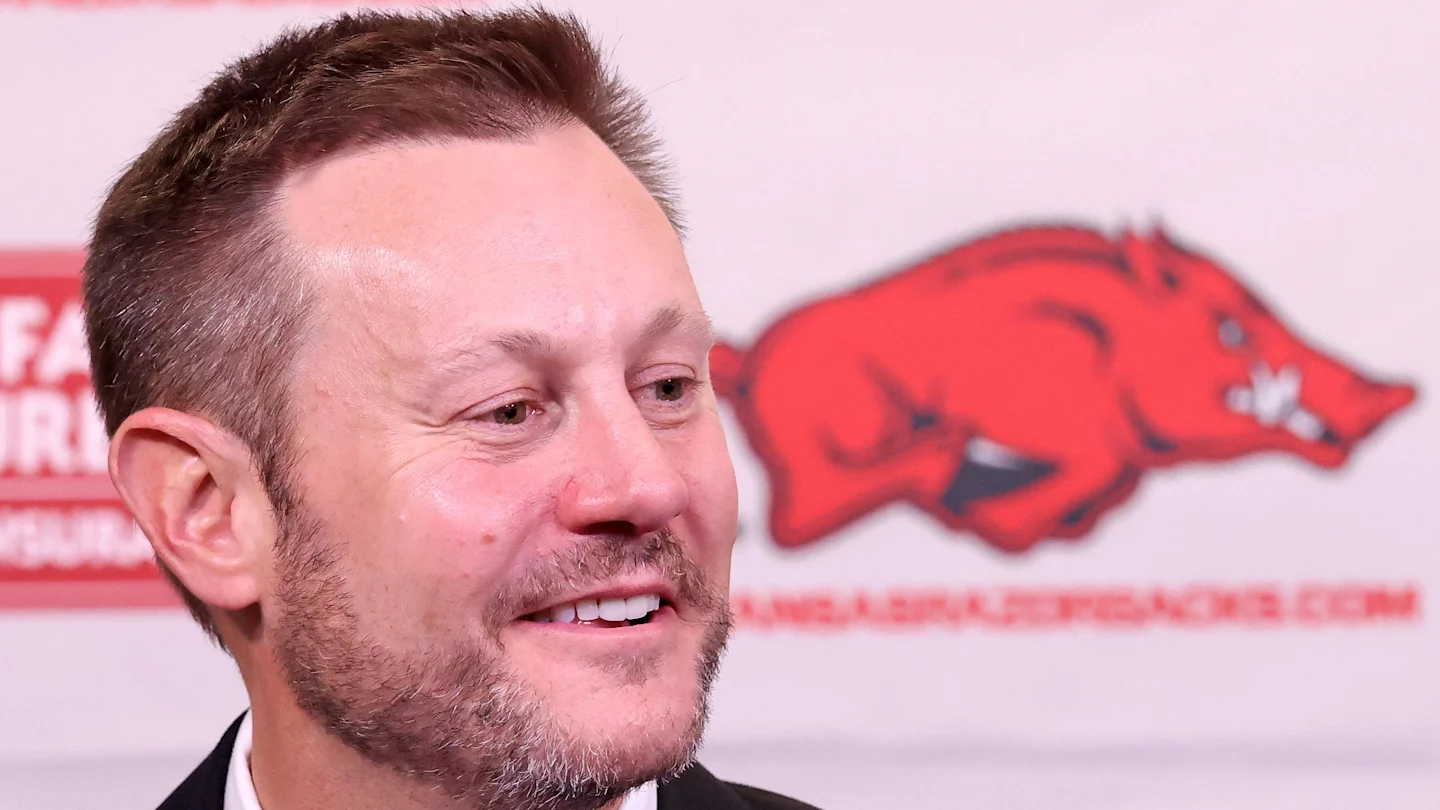
Just days into his tenure as head coach, Ryan Silverfield has already made a major impression, on more than just the Razorbacks’ players and fans. According to Arkansas Athletics Director Hunter Yurachek, a donor committed to a seven-figure donation to the football program after spending just five minutes with Silverfield in a club box at the Hogs’ basketball game last night.
“This new commitment is the first step in the process of building a championship program at Arkansas,” Yurachek said.
A Sign of Confidence in Ryan Silverfield’s Rebuild
The donation is more than a symbolic gesture. For a football program that has struggled to compete financially with other SEC powerhouses, seven figures provides critical resources. From recruiting and coaching staff salaries to roster development and facility improvements, Silverfield now has tangible backing to begin implementing his vision immediately.
That such a commitment came in less than a week on the job highlights the clarity and passion Silverfield brings to the role. During his introductory press conference, he emphasized finances as a central pillar of his plan, noting that rebuilding Arkansas football will be a swift process.
““It’s not one of those things where we’re sitting here saying, ‘Hey, you know, Hunter, I need three years to rebuild this,’” Silverfield said. “No. We can start rebuilding the culture the moment we step down.””
Ryan Silverfield
Back in September, after the dismissal of former head coach Sam Pittman following six seasons, Yurachek acknowledged that Arkansas didn’t have the funding necessary to compete with the majority of SEC programs. Attendance revenue ranked near the bottom of the conference, and NIL war chests remained limited, hindering recruiting and player development.
Yurachek, however, was optimistic that a new hire could change that. Silverfield’s arrival, and the immediate donor confidence, has confirmed that progress is underway.
““Finances were a key part of both the interview and contract negotiations,” Yurachek said. “It’s clear Ryan has a vision for how to rebuild this program, and he’s already inspiring donors to step up.””
Hunter Yurachek
For players, it signals that the program has momentum and ambition, which can be a powerful motivator on and off the field. Additionally, immediate financial support allows Silverfield to act quickly without waiting years to implement changes, a rare advantage in college football.
A New Era in Fayetteville
Silverfield’s first week has sent a clear message: Arkansas football is ready to change. With donor confidence, administrative support, and a clear vision, the Razorbacks are positioning themselves for a rapid turnaround after years of struggles.
““We’re not going to wait to start this rebuild,” Silverfield said. “The culture begins today, and we have the resources and the plan to make it happen.””
Ryan Silverfield
For fans and recruits alike, the combination of strong leadership and newfound financial backing signals that Arkansas football is entering a new era, one aimed at competing at the very top of the SEC and soon.
NIL
Hunter Yurachek dishes on ‘new financial commitments’ for Arkansas football
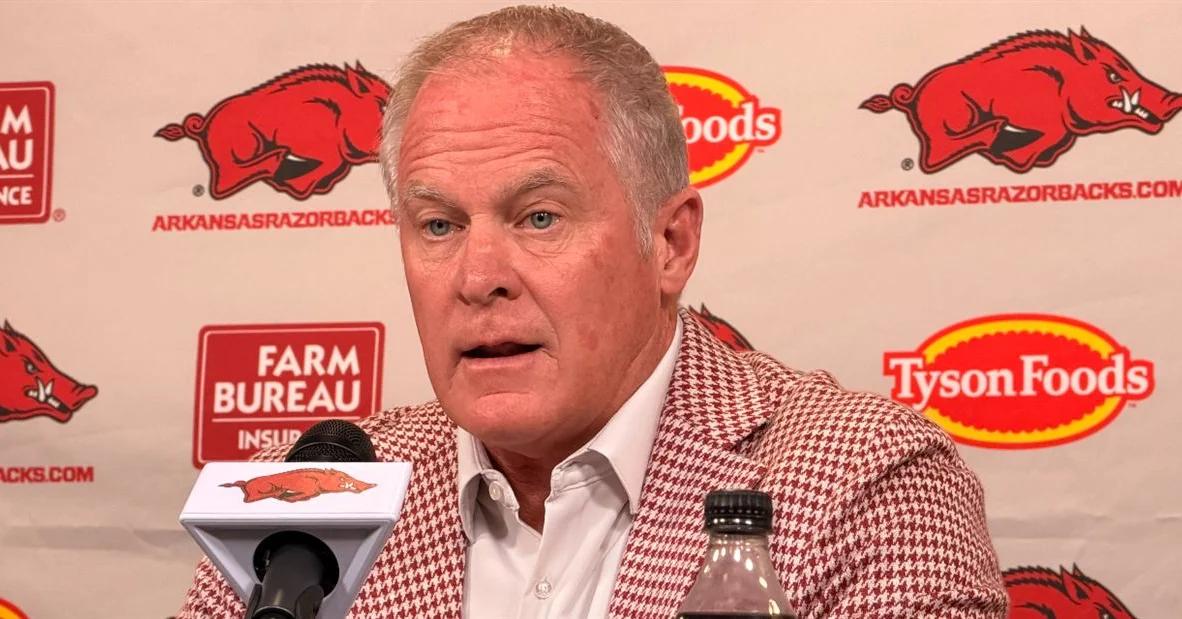
Arkansas vice chancellor and director of athletics Hunter Yurachek formally introduced Ryan Silverfield as the 35th coach in the football program’s history on Thursday afternoon to assembled media in the Broyles Center. As part of the hour-long introductory press conference, Yurachek answered a plethora of questions regarding the financial support surrounding the football program.
Back in September, following the Sam Pittman’s dismissal after six seasons as coach, Yurachek admitted that the football program didn’t have the necessary funding to compete with the majority of SEC programs in football. At the time, he seemed optimistic that would change in lock-step with a new coaching hire.
As part of his opening statement on Thursday, Yurachek revealed the funding has indeed improved. The goal is to build a championship program at Arkansas and, as Yurachek put it, this new commitment was the first step in the process of accomplishing that goal.
“The top-down alignment of a new financial commitment from our Board of Trustees, the University, the department of athletics and so many generous donors that have taken place over the last several weeks was the first step to us being all in on this goal,” Yurachek said. “This financial commitment will push us to the top half in key SEC items such as our assistant coaches pool, our strength and conditioning staff, our support staff pool and our talent acquisition through revenue sharing and legitimate NIL.”
Yurachek was peppered with questions regarding this ‘new financial commitment’ but wouldn’t divulge any specifics on the budget or amount of newly committed funds, citing a competitive advantage as the reason not to. He did, however, say the investment was “significant.”
“I think it’s our competitive advantage not to give details of what that is other than to tell you that it is a significant investment in all aspects of our football program,” Yurachek said. “That will move us to the top half of spending in all of those categories I mentioned in the Southeastern Conference.
“I don’t believe we need to be at the top of spending, we need to be somewhere where we’re really competitive and Ryan and I are on the same page with where we are. It allows him to go out and hire the assistant coaches that he believes he needs to hire to build a championship program and to invest in our revenue sharing and legitimate NIL to make sure that we acquire the best talent for our roster.
“I want to make sure that we have a competitive advantage. I think once you put your financials out there and tell other schools what you’re doing, that allows them the opportunity to come meet you where you are or exceed where you’re at.”
While the financial commitment is improved according to Yurachek, he also revealed they’re still not to the level they want to be from a fundraising standpoint. He explained that the program is off to a good start with the last few months, but they still haven’t accomplished their goal.
“We’re not to the finish line, but I will tell you from a fundraising standpoint, we’re off to a great start,” Yurachek said. “With the athletic department is going to commit is significant and that’s how we’re going to reallocate some of the dollars that we have. The board is going to make a commitment to our football program as well, and all of that is significant. I don’t want to tie down a specific dollar amount to any of that, because I don’t want to limit what we can do
a couple of different revenue sources that we’re looking through, both through our foundation and through the athletic department, and then just how we reallocate money that we’re currently spending within our department, whether that’s from a salary standpoint, an operational standpoint, but we feel like we can do some things differently to be more efficient, that we can reallocate more dollars to our football program.
Yurachek explained that some of the financial commitment from the athletic department will come from reallocation of what they’re currently spending. He mentioned salaries, operations and that there are other ways they can be more efficient which helps push more money toward football.
When asked how fans will be able to notice the new financial commitment behind the football program, Yurachek pointed to Silverfield’s recruiting and staff additions among other things.
“It will come when he announces some of the people on his staff, that will be the first piece,” Yurachek said. “Then when you see how our roster comes together after the transfer portal officially opens in January, you see we’ve got a couple of young men in here (Quincy Rhodes and KJ Jackson) that are coming back. That’s a part of the financial commitment that we’ve made into our football program, to be able to retain those high-caliber, very talented young men.”
It’s not just Yurachek and his staff helping get Arkansas football in better financial shape. Silverfield himself has hit the ground running in that department and has made a difference in just a matter of days. Yurachek shared a story of the new Razorbacks head coach leaving quite the impression on one donor at Thursday’s basketball game.
“Let me touch on his fundraising prowess,” Yurachek said of Silverfield. “He doesn’t even know this yet. He was in the courtside club last night, and he was doing what he does in building relationships with donors. Right off the bat, he walked away from one donor, the donor came up to me and committed to a seven figure gift to a football program, just with a brief five minute encounter.”
NIL
New Arkansas coach Ryan Silverfield says it won’t take long to rebuild the program

FAYETTEVILLE, Ark. (AP) — Ryan Silverfield had a second stop to make Thursday after his first press conference since being hired as Arkansas football coach.
He had to face the people he needs to win over, the ones the Razorbacks need to increase their spending so they can compete with the SEC’s power programs.
Silverfield signed a five-year, $33.5 million deal to take over in Arkansas earlier in the week. He had coached Memphis since the 2020 season, plus a single game with the Tigers as interim head coach in 2019. Memphis qualified for a bowl in every season with Silverfield at the helm and peaked in 2024 with an 11-2 record. The Tigers hold an 8-4 record ahead of a likely bowl game.
Those kinds of results at Arkansas would be a boon. The Razorbacks’ season concluded Saturday with a loss to Missouri. That ended a 2-10 season with an 0-8 record in the Southeastern Conference, the third season in the last seven Arkansas finished with those marks.
“This program is built on pride, resilience and toughness, and it’s time to bring it all back,” Silverfield said at the press conference. “Being all in together, we will rebuild it, we will earn it, and we will make this state proud.”
Finances were one of the biggest points in both the press conference and the public introduction a few hours later. Arkansas athletic director Hunter Yurachek has made a point for the last year that the Razorbacks need more contributions for NIL funds in order to compete at a higher level in the SEC. The first audible announcement over the loudspeaker before Silverfield took the dais was one asking for money.
NIL war chests are tight-lipped secrets across college football. But Arkansas’ football attendance, which equates to revenue earned, ranks fifth from the bottom in the SEC. Both Silverfield and Yurachek said finances were a key topic during the interview and contract negotiations.
“I think it’s our competitive advantage not to give details of what that is, other than to tell you that it is a significant investment in all aspects of our football program that will move us to the top half of spending in all of those categories I mentioned in the Southeastern Conference,” Yurachek said. “I don’t believe we need to be at the top of spending. We need to be somewhere where we’re really competitive and Ryan and I are on the same page with where we are.”
Quarterback KJ Jackson and defensive end Quincy Rhoads Jr. both joined the press conference and announced they would return to the team in 2026. Jackson, a rising sophomore, took over as Arkansas’ starting quarterback for the final game of the season and is largely considered the future of the position. Rhoads finished in a tie for fifth in the SEC in sacks (8) and second in the league in tackles for-loss (17 1/2).
Silverfield told fans he doesn’t think a rebuild will take long.
“It’s not one of those things where we’re sitting here saying, ‘Hey, you know, Hunter, I need three years to rebuild this,’” Silverfield said. “No. We can start rebuilding the culture the moment we step down.”
___
Get poll alerts and updates on the AP Top 25 throughout the season. Sign up here and here (AP News mobile app). AP college football: https://apnews.com/hub/ap-top-25-college-football-poll and https://apnews.com/hub/college-football
NIL
Mitch Barnhart emphatically affirms Kentucky football’s NIL status – Kentucky Kernel
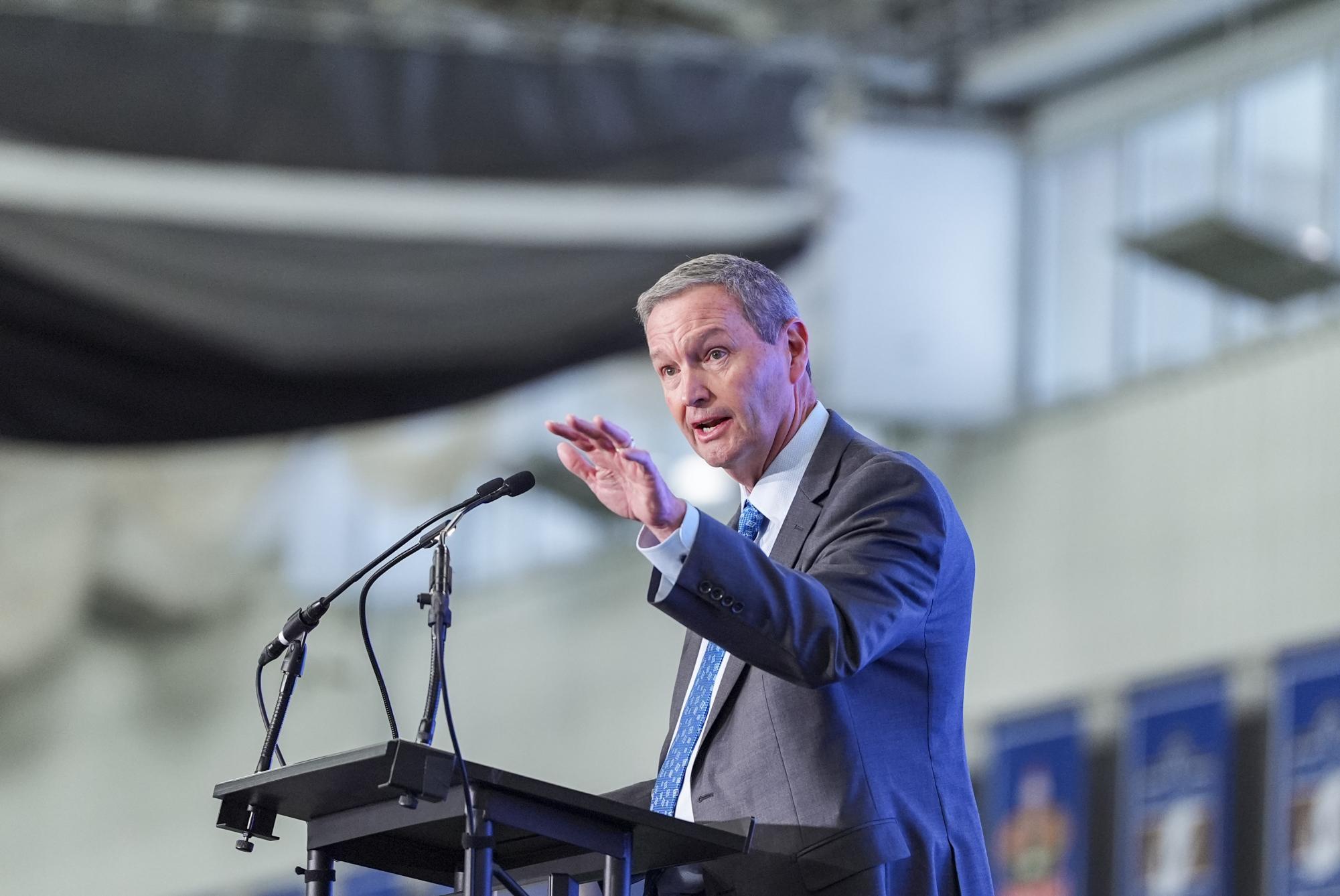
A new era of Kentucky football was celebrated yesterday as Will Stein was introduced as head coach and spoke to fans along with media for the first time.
As expected, NIL came up in this conference as it is the talking point of college sports all around the country.
The new head coach was the first to confirm that Kentucky is where it needs to be to compete for the players it wants under the new leadership.
“Yeah, of course, of course,” Stein said. “Mitch [Barnhart], Mark [Hill] laid out a great plan. Feel like we’re right there to be successful right away.”
To help navigate this process, it is believed that Pat Biondo will be joining the staff as a general manager.
The role has started to become more integrated into the sport in this rising world of NIL in order to have experts at the forefront of this process for recruiting and roster-building purposes.
Barnhart spoke with media after the introductory press conference and doubled-down on Stein’s take about NIL for the program in a fired response.
“We’re confident in what we’re doing and people ask that question 19 different ways, from all the stuff that’s been going on, and it’s exhausting. You know, enough, enough about have we got enough? We’ve got enough, and we’re working at it just like everyone else is working at it We’re no different,” Barnhart exclaimed. “They’ve got Learfield, we’ve got JMI, they’ve got Learfield, they’ve got playflight. So this notion that we don’t have enough is ridiculous. We’ve got enough.”
Another avenue that has caused several debates on NIL is the salary cap that limited the amount schools could directly share to athletes at $20.5 million.
This was meant to limit the amount schools could give players and sounds good in principle, but like most things when it comes to NIL, did not work that way.
A lot of schools have used deals outside the school that has inflated the money within college football programs well above the limit.
Some schools have even incorporated and expanded athletic departments into agency to secure the deals for these players that bend the rules just a bit.
Another major issue is that schools are making NIL promises part of recruitment for high schools players and transfers.
Within the given timeframe, there is nothing wrong with this, but since NIL, teams have been known to reach out to players when they are not allowed to.
This tampering expedited the process for getting Stein to Lexington to become the Wildcats next head coach.
“Make no mistake about it, we can talk about tampering, we can talk about no doing this, no doing that, they’re flat calling players all over the place, and there’s player movement everywhere,” Barnhart said. “So let’s not kid ourselves, so, yeah, to protect our roster, to protect our program, to protect recruiting, we had to move fast.”
However, while others might be not playing the rules and finding workarounds, that is not going to happen at Kentucky.
“We’ve got to resource it the right way. We got to assess talent the right way. We got to acquire it the right way. We’ve got to make sure we’re within the boundaries and the rules,” Barnhart said. “We’re not going to break the rules. That’s flat out. We’re not doing that alright, we will do it the right way. We don’t need to, we don’t need to do that. We’re good enough at what we do. We’ve got good people.”
With National Signing Day over and the transfer portal opening in January, it will not take long to see just how well Stein and Kentucky can compete with the rest of the SEC to recruit talent in this NIL era.
NIL
Vanderbilt QB Diego Pavia pleads to Trump for College Football Playoff executive order
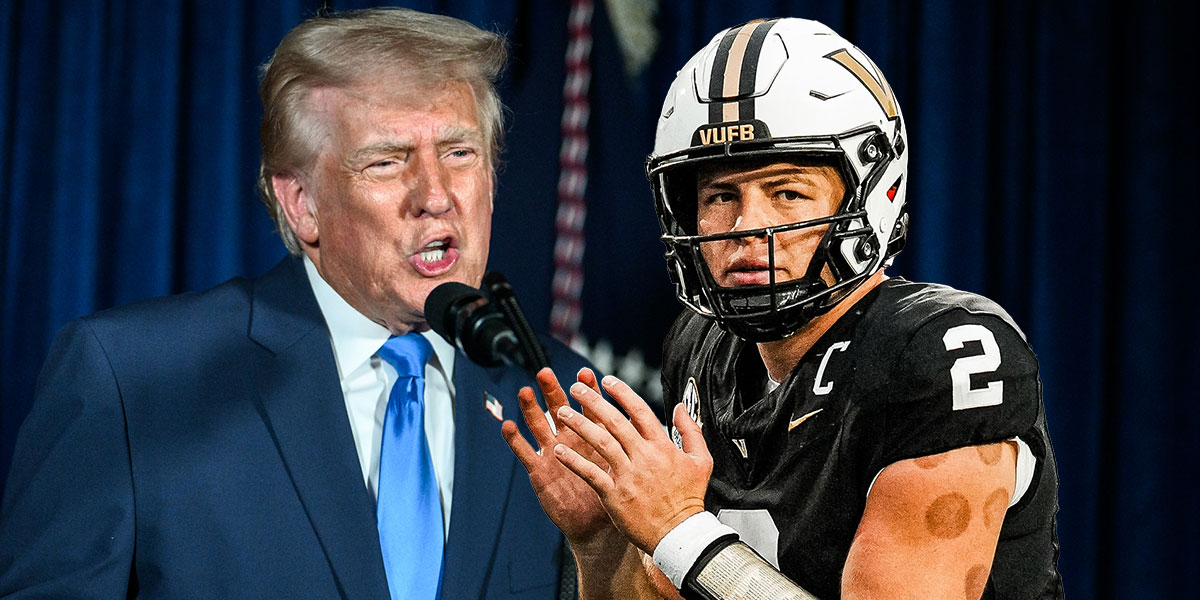
College football has had incredible developments over the last several years, from NIL deals, to the expanded college football playoff and everything in between, so much so that it’s led to more government involvement in the sport than ever before.
Not to mention, the transfer portal process became such an issue that President Donald J. Trump tried several methods to help the greater good of the game, including signing executive orders and encouraging Congress to come up with solutions.
Though, the latest request of the President comes from one of college football’s biggest stars.
Upon the release of the latest College Football Playoff rankings just days before the final reveal of the field, the Vanderbilt Commodores — who are 10-2 with losses to Alabama and Texas — came in at No. 14 with no real path to move into the 12-team field.
Commodores’ quarterback Diego Pavia — who will likely be a Heisman Trophy finalist — has pleaded with Trump to sign an executive order that would expand the field to 16 teams, allowing four from the SEC to be guaranteed, along with four at-large bids.
Needless to say, Pavia’s request is not going to get approved, but it does reflect the current chaos college football finds itself in when star players are openly begging the President to do something about a flawed system.
Whether Pavia’s in the playoffs or not, he and Vanderbilt have been one of the best stories in the nation this year, and he has made huge contributions to college football.
NIL
Ron Hart: Lane Kiffin and the art of the Irish exit
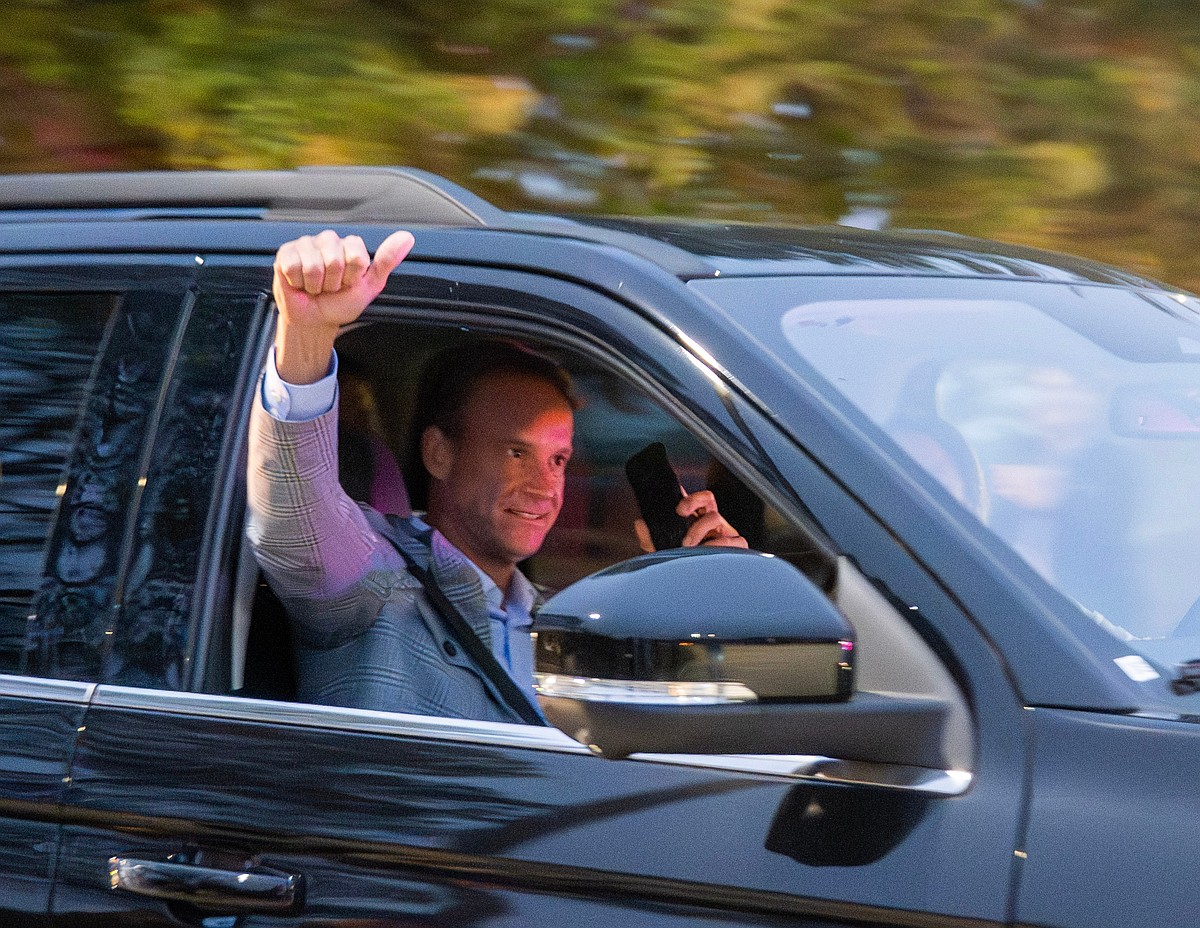
Like most Southerners, I love SEC football. A girlfriend broke up with me once over it — we dated just two seasons. She told me I loved college football more than her. To try to make her less upset, I told her I loved her more than ice hockey.
Ohio State is the team to beat this year, but the SEC is always in the mix. College football appeared right after the Civil War to give Southern and Northern states a safer way to keep on fighting.
Let me say up front that I like Lane Kiffin. I went to basketball schools, so I can be a fair arbiter here.
(IN THE NEWS: Lane Kiffin exits Ole Miss for LSU; Pete Golding takes over for Rebels)
Kiffin is one of a few head coaches with a sense of humor. He gives an interesting interview beyond the superficial platitudes most have been taught to spew. In leagues where coaches speak in measured tones of “process” and “culture,” he will push back and poke, all with a wry smile. He channels Coach Mike Leach, who was the greatest.
Kiffin wins, but loyal he is not. Some coaches build dynasties; he builds frequent flyer miles. He is the coach colleges love to hate. He feeds on it. He does not care. I like that.
The worst form of thinkers, the NCAA, politicians and college presidents, have designed the current NIL/college football landscape. These people who are used to making bad decisions with other people’s money have created a convoluted mess.
Jimmy Sexton, the “coach’s agent” who has a virtual monopoly in the space, owns these colleges. With his $80 million coach buy-outs paid by colleges with tuition going up at twice the rate of inflation, I’m surprised some state has not pursued an antitrust case against him.
Lane left for LSU, where he might find a home. Louisiana has a long history of rogues and reprobates, and not just in politics. Sixty percent of Louisiana is under water, the other 40% is under indictment.
Without an in-state rival to turn him in, and in the rough and tumble nature of Louisiana, Kiffin might thrive. The last LSU coach, Brian Kelly, left for health reasons. Fans were sick of him.
Kiffin’s decision to move, he said, relied on his former boss, Nick Saban. He once described Saban as “like an ex” in a divorce settlement. The man is a conundrum wrapped in a kerfuffle.
(IN THE NEWS: Ole Miss loses coach but moves up a spot in College Football Playoff rankings)
His departure from Ole Miss was a masterpiece of awkward timing, as the team was preparing for the College Football Playoff. As the fan base wailed in betrayal, Kiffin asked if he could coach in the playoffs. Talk about your haughty toddy! Ole Miss said no. As he left Ole Miss in a jet, he told several assistant coaches to get on the plane with him now or no job. Baller move. Five went.
LSU will take its place in this year’s playoff as it has recently: on the couch watching it.
A winning coach can name his terms. UNC signed Bill Belichick with the agreement that his girlfriend would be given a snap bid to pledge Chi Omega and live in the sorority house. Sadly, Belichick’s first loss was 73 to 22, calling even more attention to the relationship.
SEC football is a big deal. Trump attended the Georgia vs. Alabama game. Vanderbilt would not let Trump come for fear he would deport their QB, Diego Pavia. Maybe it would be covered on ESPN Deportes?
Amid the chaos, Vanderbilt has been on the rise. Their coach stayed; they flipped the No. 1 QB commitment from Georgia. Vanderbilt hopes to build the kind of football team their women’s bowling team can be proud of.
Football might be the “bread and circus” of our times. It goes beyond North and South, state versus state. It’s a religious experience. I always told my kids that an atheist is a person who watches Notre Dame play Southern Methodist and doesn’t care who wins.
Contact Ron Hart, a syndicated op-ed satirist, author and TV/radio commentator, at Ron@RonaldHart.com or X @RonaldHart.
-

 Rec Sports2 weeks ago
Rec Sports2 weeks agoFirst Tee Winter Registration is open
-

 Rec Sports1 week ago
Rec Sports1 week agoFargo girl, 13, dies after collapsing during school basketball game – Grand Forks Herald
-
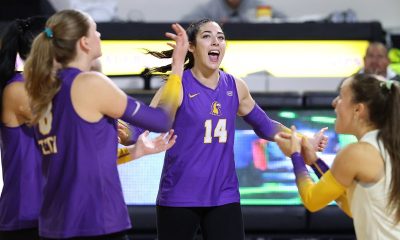
 Sports2 weeks ago
Sports2 weeks agoVolleyball Recaps – November 18
-

 Motorsports1 week ago
Motorsports1 week agoCPG Brands Like Allegra Are Betting on F1 for the First Time
-

 Motorsports2 weeks ago
Motorsports2 weeks agoF1 Las Vegas: Verstappen win, Norris and Piastri DQ tighten 2025 title fight
-

 Sports1 week ago
Sports1 week agoTwo Pro Volleyball Leagues Serve Up Plans for Minnesota Teams
-

 Sports1 week ago
Sports1 week agoSycamores unveil 2026 track and field schedule
-

 Sports1 week ago
Sports1 week agoUtah State Announces 2025-26 Indoor Track & Field Schedule
-

 Sports1 week ago
Sports1 week agoTexas volleyball vs Kentucky game score: Live SEC tournament updates
-

 NIL4 days ago
NIL4 days agoBowl Projections: ESPN predicts 12-team College Football Playoff bracket, full bowl slate after Week 14
















